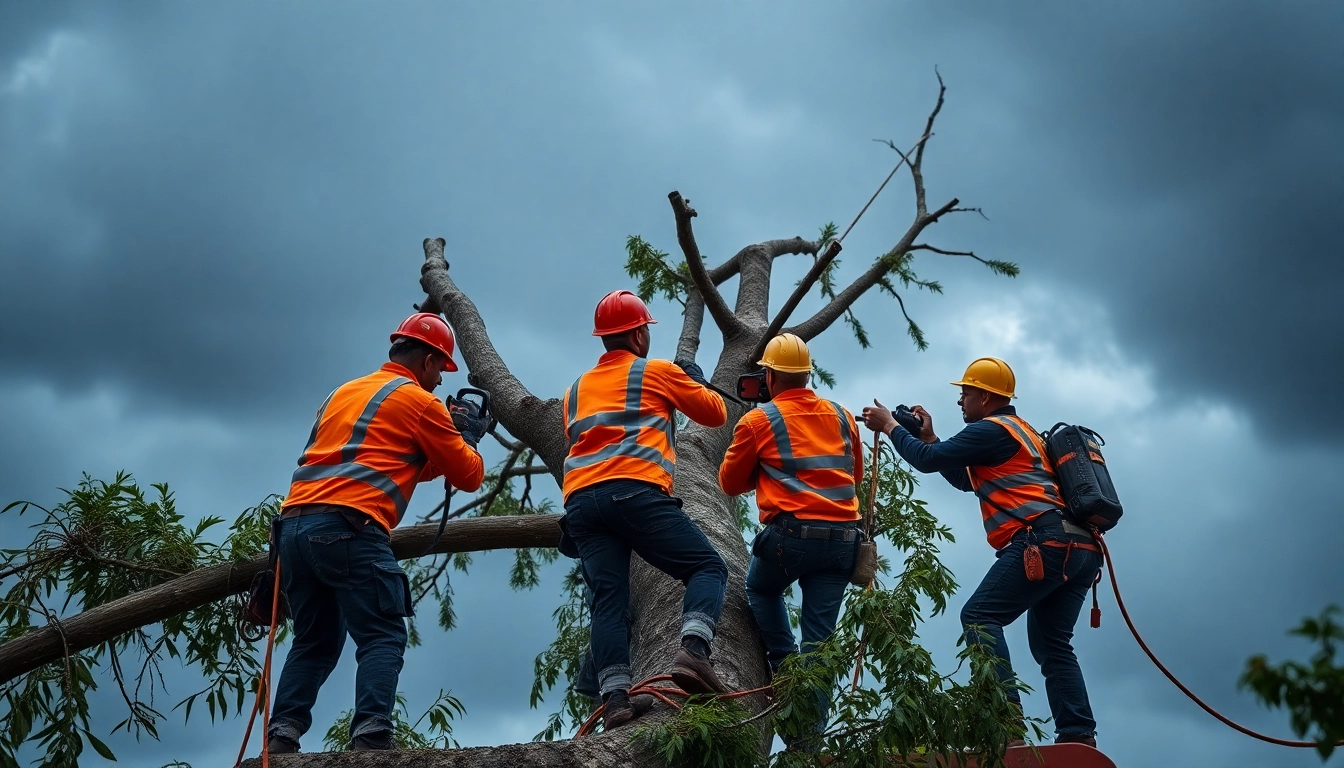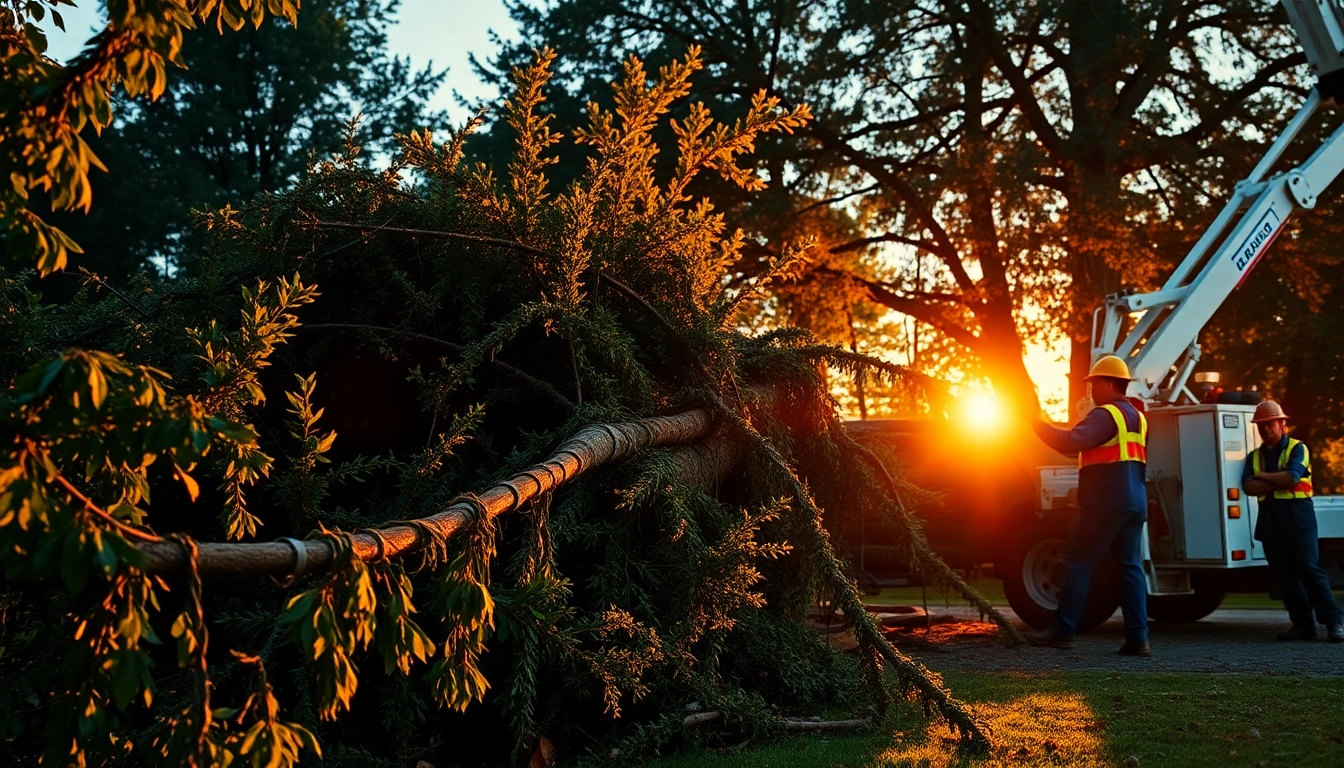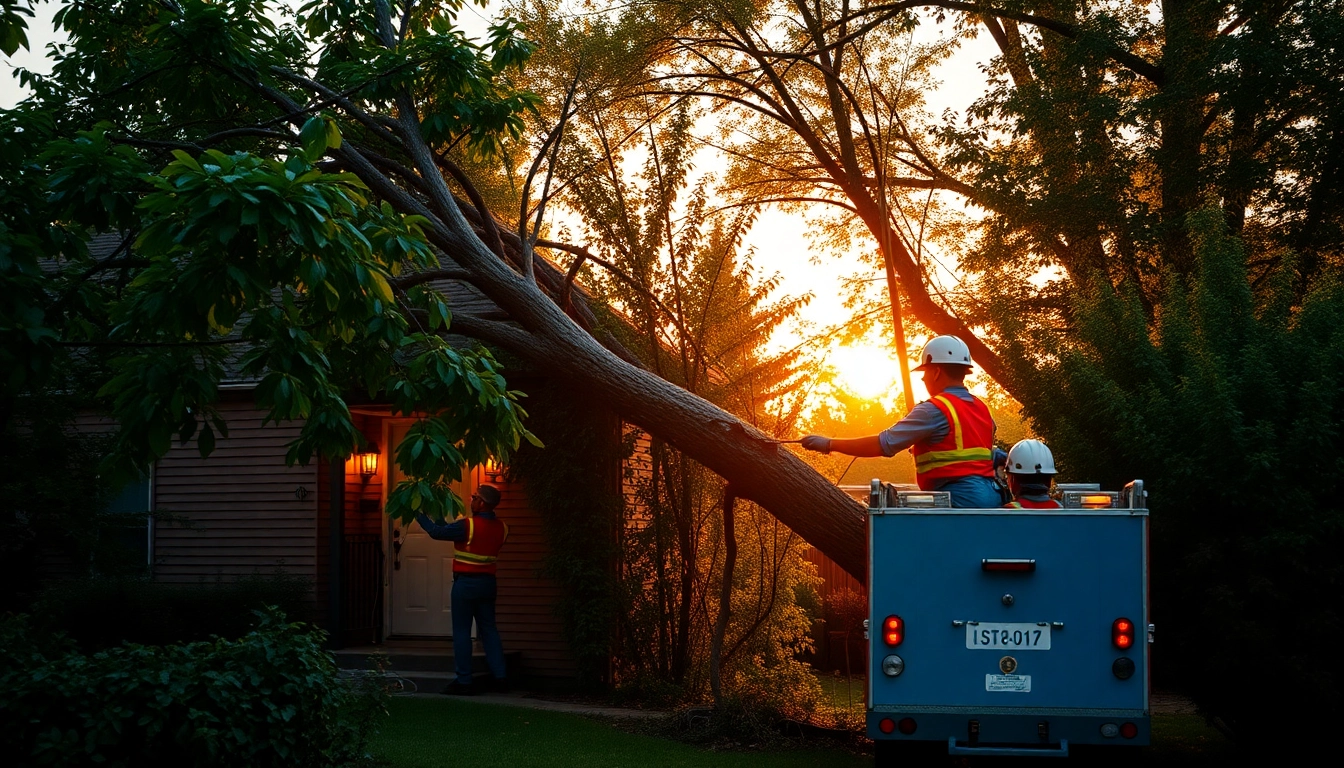
Understanding Emergency Tree Service
When nature unleashes its fury, whether through storms, heavy winds, or sudden environmental shifts, trees can become precarious hazards on your property. This is where emergency tree service steps in, providing crucial support for homeowners facing unexpected tree-related crises. Understanding the nuances of emergency tree services can help you respond swiftly and effectively in urgent situations.
What Constitutes an Emergency Tree Situation?
An emergency tree situation typically arises when a tree poses an immediate threat to safety, property, or infrastructure. This can include trees that are in danger of falling, have already fallen, or are threatening power lines and structures. The conditions that constitute an emergency can be wide-ranging, including:
- Severe storm damage, such as uprooted or broken trees.
- Rotted or diseased trees that risk falling without warning.
- Branches dangling precariously over roofs or vehicles.
- Blocked roads or pathways due to fallen trees.
In essence, any tree issue that creates immediate danger or requires swift action qualifies as an emergency tree situation.
Common Causes for Emergency Tree Service Calls
Emergency tree service calls often stem from various environmental and structural threats. Some of the most common causes include:
- Severe Weather: Hurricanes, heavy rainfall, and windstorms can lead to dangerous tree damage.
- Aged Trees: Trees that have aged past their prime may develop structural weaknesses.
- Pest Infestation: Infestations can weaken a tree, making it more susceptible to breaking.
- Improper Pruning: Incorrect trimming can leave a tree unstable and more likely to fall.
Being aware of these causes can aid homeowners in recognizing potential hazards before they escalate to emergencies.
Importance of Prompt Response in Tree Emergencies
Timeliness is crucial when dealing with tree emergencies. Delays in addressing a fallen tree can lead to increased damage to homes, vehicles, or even personal injury. Prompt response can mitigate risks by:
- Reducing the potential for further damage during subsequent storms.
- Avoiding long-term hazardous conditions that could affect the landscape.
- Facilitating quicker restoration of normalcy and safety in affected areas.
In situations where every second counts, having an emergency tree service on speed dial can make a significant difference.
Assessing Tree Damage
When a tree has been damaged, determining the severity of that damage is vital for homeowners. An accurate assessment can guide the next steps, whether that involves calling for emergency help or implementing immediate safety measures.
Signs You Need Emergency Tree Service
Recognizing the signs that a tree may require emergency service can save homeowners from costly repairs or safety issues. Common indicators include:
- Visible cracks in the trunk or major branches.
- Leaf discoloration, which can indicate poor health or disease.
- Widespread root damage or exposed roots.
- Signs of leaning, which indicate instability.
If you notice any of these signs, it’s essential to act quickly and call a professional.
How to Evaluate Tree Stability Quickly
While waiting for a tree service, homeowners can perform a preliminary evaluation of tree stability. Here are steps to assess whether immediate action is needed:
- Visual Inspection: Look for leaning or cracks in the trunk.
- Shake Test: If safe, gently shake the trunk. A lot of movement may indicate instability.
- Examine Surroundings: Check for signs of soil heaving or roots exposed.
A thorough, albeit quick, evaluation can better inform professionals when they arrive.
When to Call for Professional Help
If your evaluation raises concerns, it’s time to contact emergency tree services. Some specific scenarios warrant immediate professional help:
- The tree is physically leaning or has begun to fall.
- You notice multiple fallen branches or damage to surrounding structures.
- There are visible signs of decay or structural integrity issues.
Always err on the side of caution; if uncertain, it’s best to consult with experts.
Choosing the Right Emergency Tree Service
When facing a tree emergency, selecting the right service provider is critical. The reliability and professionalism of the service can significantly influence the outcome.
Key Qualities of a Reliable Emergency Tree Service Provider
Look for several essential qualities when evaluating an emergency tree service:
- Certification and Insurance: Make sure the service provider is licensed and holds appropriate insurance to protect against liabilities.
- Experience: A company with a proven track record in handling emergencies will likely perform better in high-pressure situations.
- Availability: Choose a provider that offers 24/7 services for urgent calls.
Questions to Ask Before Hiring
To help narrow down your choices, consider asking potential service providers the following questions:
- How quickly can you respond to an emergency call?
- What safety measures do you employ during tree removal?
- Can you provide references from previous emergency calls?
The answers to these questions can give you insight into the provider’s reliability and expertise.
Understanding Costs and Services Offered
Understanding the potential costs associated with emergency tree service is also crucial. Services often include:
- Tree removal: costs can vary based on size, location, and complexity of the job.
- Tree trimming and pruning: required to remove hazardous branches.
- Stump grinding and removal: restoring land after a tree has been taken down.
Ask for a detailed estimate to avoid unexpected charges upon completion of the work.
Emergency Tree Removal Process
In cases where tree removal is unavoidable, understanding the process can ease anxiety and keep you prepared for what to expect.
Steps Involved in Safe Tree Removal
Removing a hazardous tree requires careful planning and execution. The following steps outline a typical emergency tree removal process:
- Assessment: Professionals assess the tree condition and surrounding area to create a safe removal plan.
- Preparation: Clearing the area and informing nearby residents can help ensure safety.
- Execution: Using specialized equipment, the tree is cut down piece by piece, often starting from the top.
- Cleanup: Removing debris, wood chips, and any remaining hazards from the site.
Safety Precautions for Tree Service Workers
The safety of workers is paramount during an emergency tree service. Workers typically adhere to several safety precautions, including:
- Wearing protective gear like helmets, gloves, and harnesses.
- Employing proper techniques to avoid falling limbs.
- Ensuring ropes and harnesses are secure when working at heights.
These measures contribute greatly to accident prevention during tree removal operations.
Post-Removal Cleanup and Prevention Tips
After tree removal, it’s essential to focus on cleanup and future prevention. Suggestions include:
- Promptly removing all debris to restore normalcy to the area.
- Leveling the ground and preparing the site for future landscaping.
- Regularly inspecting trees on the property to catch issues early.
Implementing these recommendations can prevent further emergencies in the future.
Aftermath of Tree Emergencies
The situation doesn’t end once a tree has been dealt with. Understanding the aftermath and taking preventive measures are essential for maintaining the safety and health of your property.
Assessing Property Damage and Restoration Services
After a tree emergency, assessing any damage is crucial. Check for:
- Household structures, such as roofs or fences.
- Landscape features, including gardens and other plants.
- Nearby utilities, especially electrical lines.
Damage restoration may require consultation with contractors or insurance adjusters to ensure proper repairs.
Preventive Measures to Avoid Future Tree Emergencies
Taking proactive steps can help mitigate the risks of future tree emergencies. Consider the following:
- Regular inspections: Annually check the health and stability of trees on your property.
- Pruning: Properly trim trees to maintain structural integrity and health.
- Removal: If a tree poses risks due to health or structural issues, consider removal before it becomes an emergency.
Staying ahead of potential problems can save homeowners from emergency situations down the line.
The Role of Regular Tree Maintenance
Overall, regular tree maintenance plays a vital role in preventing emergencies. A commitment to ongoing care can lead to:
- Healthier trees that resist disease and pests.
- Identifying structural issues before they escalate.
- Safer environments, minimizing injury and property damage risks.
Engaging with a professional tree service regularly can provide guidance and tailored service for ongoing maintenance needs.





